

Manual espresso machines are the tried and true method for making espresso in coffee shops around the world. These machines have a classic look and feel that no automated espresso machine can match. So, if you want to make espresso at home, it only makes sense to opt for the best manual espresso machine there as well.
We examined dozens of manual espresso machines in order to help you find the best model, ultimately narrowing down to just nine favorite picks. The WACACO Nanopresso Portable Espresso Maker took our Editor’s Choice award thanks to its tiny size and portability, the ability to use premeasured capsules, and easy-to-use design. But, you’ll find reviews of four more classical manual espresso machines below as well.
When choosing the best manual espresso machine, ease of use was key. We looked at what types of coffee the machine could take and whether it could brew multiple shots at one time. We also considered whether it uses a pumping system or a lever press. Of course, taste tests from customers were also an important factor in our decision. You can read more about our nine favorite manual espresso machines below, followed by a buying guide that covers everything you need to know about choosing the right one for you. Finally, we’ll sum up our three overall favorite manual espresso machines on the market today.
More features: NS Adapter to use Nespresso capsules (sold separately)
This extremely compact and versatile espresso maker from WACACO can hide away in your kitchen, travel to work with you, or even go on vacation. The Nanopresso is just six inches long, and the bottom unscrews to serve as a cup for your espresso shot.
The design is relatively simple – coffee grinds go in the center, water above that, and the center button pops out to serve as your pumping mechanism. Users liked that it’s easy to pump with just your palm, although they noted that having a larger pump lever would be better if you plan to make multiple espresso shots in a row.
Users also loved that this espresso machine is incredibly easy to clean. It can be taken apart in seconds, and under running water it’s fast and simple to rinse everything off. Cleaning is a bit more difficult when travelling, but users found that it’s still not that hard even if you don’t have access to a sink.
Our favorite thing about this manual espresso machine is how adaptable it is. WACACO sells a number of add-on kits, which you can use to make this machine work with Nespresso capsules or to convert for making double espresso.
Although this espresso machine is surprisingly cheap, users were pretty impressed by the quality of the espresso it makes. It’s not quite an old-fashioned metal press, but it comes very close – and if you’re planning to use it primarily for travel rather than at home, that’s a big plus.
More features: 6 bar to 10 bar lever pressure; 30 to 45-second shot extraction time; custom travel case included
This espresso machine from Flair truly captures what most people are looking for in a manual machine. It’s aesthetically beautiful and requires patience and practice to achieve the perfect espresso shot. That said, it’s not necessarily the best everyday espresso machine for a lot of people because it takes some work to achieve a single shot of espresso.
This machine is simple and durable, with a piston that is pushed down by manually forcing a lever. The lever is large, which allows you to put your weight behind it rather than simply exhausting your arm muscles. However, the 30- to 45-second extraction time (which typically requires three lever presses) can be a lot of work. You’ll also need to practice a lot to ensure you’re getting an even extraction from your coffee grounds. Keep in mind that if you have guests, making multiple shots with this espresso machine can take a lot of work.
This espresso machine isn’t that large or heavy, at about one foot long and five pounds. Flair includes a specialized carrying case so you can use it for travel, although you’d probably want to reserve packing it up for special occasions. The machine also comes with a five-year warranty, although users noted that the piston parts are replaceable so it’s easy to make it last for decades.
The biggest downside to this machine is that cleaning it can be a challenge. The piston gets hot and expands, so you essentially have to wait for it to cool down before you can pull the pieces apart to get the coffee grounds out.
More features: 7 bar pressure; steam wand for cappuccino; internal thermostat; one or two shots at a time
This professional-quality lever espresso machine from La Pavoni is designed primarily for coffee shops, although it can also be used at home. The machine isn’t cheap, but the build quality is such that it can last for generations with proper maintenance. We were disappointed that it only comes with a one-year warranty given the price, but users didn’t experience any issues.
This espresso machine uses a pressurized reservoir, so you don’t actually have control over water temperature. You need to bring the entire reservoir to a boil, which can take about 10–15 minutes of heating (this machine also requires electricity). An internal thermostat allows you to check on the water, and if you want a slightly cooler temperature, you’ll have to wait for the water to cool.
The advantage to this design, though, is that you can pour either single or double shots depending on how much coffee you add to the filter. Plus, you can continue to pour shots as long as you still have hot water in the reservoir – with a 38-ounce capacity, that means you can pour around 15 shots before you have to stop and refill the espresso machine.
As for other lever machines, practice makes perfect. This machine isn’t necessarily the easiest to use, and in fact it can take more practice than some of the other lever models we reviewed because of the pressurization step. There are plenty of videos online about how to use this machine, and you’ll need to be extremely patient to get the perfect espresso shot from this model.
More features: wooden-handled bottomless portafilter; PID and dual pressure gauge; overpressure valve
This manual espresso machine features a beautiful design that would look great on your kitchen counter. Bianca PID V2 is the newest espresso machine from Lelit, with a dual boiler and manual brew pressure profiling.
The Lelit Bianca espresso machine gives you a lot of control over the coffee-making process. You get full control over the brewing pressure with the wooden paddle and brew pressure gauge, regardless of the type of coffee you want to make. The sophisticated PID system is another top feature, which allows for a reference timer, timed preinfusion, and low-water level alert.
Another tech feature of this manual espresso machine is the dual pressure gauge which is used to measure the boiler and pump pressure. To provide you with flexibility, Bianca also has multi-directional steam and hot water wand, which adds to its versatility. For a quiet coffee-making process, the espresso machine is fitted with a rotary vane pump and motor. You can easily remove and refill the portafilter to relieve the brewing pressure. It comes with a lot of accessories for a complete coffee-making experience.
If you decide to purchase the Lelit Bianca, you should keep in mind that the coffee maker needs up to 30 minutes to warm up before you can start making a fresh cup of coffee. It also needs regular cleaning and maintenance and is a bit heavy. It would fit well on your kitchen counter with its design and bulky size.
More features: dual frothing cappuccino systems; Internal thermostat; 2 portafilters included; 950W nickel-plated; solid brass boiler
Another recommended espresso machine is the La Pavoni Esperto Competente, with cutting-edge technology. This coffee maker comes with a unique design that sets it apart from other types of machines and is made with high-quality materials for long-lasting use. Even the most demanding and experienced coffee lovers would be satisfied with this machine.
You can easily monitor the brewing pressure of this coffee maker by pulling out the lever and proper brew pressure profiling with the group-mounted pressure gauge. It also comes with a boiler pressure gauge for easier control and an internal thermostat used to automatically control the pressure. You can make up to two cups of espressos at a time with this machine, ideal for you and your partner or guest.
Asides from espressos, you can make cappuccinos with the dual frothing system integrated into the La Pavoni Esperto Competente. Asides from its versatility, the machine is very safe to use. It includes an internal re-set switch, which turns it off in case of overheating. You can use the machine for a long time, as it is made with high-quality materials and expertly handcrafted to fit your kitchen décor.
If you’re new to coffee making, you might not be able to use this machine because of the complicated design and multiple gauges. It can also overheat after making a few espresso shots, so you must pace yourself while using it.
More features: steam pressure gauge; water level indicator; polished chrome and brass finish
The Elektra S1CO Microcasa Lever espresso machine boasts a beautiful and retro-style design that would appeal to old-schoolers. But it doesn’t only offer good looks. This manual espresso maker is known for heating up quickly and quietly, with minimal cleanup required afterward. It also gives you a fantastic espresso shot at the end and can be used to make cappuccinos too.
A major highlight of this espresso machine is the Spring Piston Lever Operation, which gives you high-quality and consistent espresso extraction. To operate it, you simply need to pull the lever down and then release it so that it pushes hot water through the coffee. It also comes with a pressure gauge, which shows you the perfect time for preparing an espresso through the boiler’s steam pressure.
The beautiful design makes this espresso machine a great fit in your kitchen or dining room, but it comes with other benefits for a great coffee experience. It can also be used to make delicious cups of cappuccino by providing dry steam through the boiler, which froths milk. Although the machine seems complicated, it is easy to use after following the manual. After practicing a few times, you would get the espresso-making process easily.
It’s essential to be careful of burns while using this machine, as the boiler is exposed on the outside of the unit. So, children should not play around with the machine. It also requires regular maintenance, like lubrication and replacing gaskets. But this makes it work even better and results in delicious espressos.
More features: 15 to 20 bar pressure; special milk foam generator
This inexpensive manual espresso machine from STARESSO is ideal for burgeoning baristas on a budget. The machine uses a basic pump mechanism, with the lever extending from the top of the unit. That makes it very easy to push down with your palm, so that this machine won’t tire you out. The pressure – 15 to 20 bars – is a bit high, but users found that this didn’t negatively impact the quality of the espresso the machine produces.
We liked that the machine can accept either ground coffee or Nespresso pods without an add-on adapter. You can also get a special milk foam adapter, which you can use to make drinks like cappuccinos and lattes. On top of that, users found that this machine is easy to take apart and clean.
Depending on your perspective, it can be either a good or bad thing that this espresso machine is so easy to use. It’s great at an everyday espresso maker, but on the other hand, you lose out on some of the challenge of mastering the manual espresso shot.
The only real downside to this espresso machine compared to our Editor’s Choice WACACO machine is that this one is a bit larger. So, it’s not as portable if you want an espresso machine for travel. In addition, there aren’t any add-ons for this machine that allow you to expand its functionality in the future.
More features: stainless-steel portafilter with a detachable plastic double spout attachment; upgraded piston gasket; storage tin included
This beautiful and simple manual espresso machine from ROK is a great option for home use. The machine only accepts enough water to make one espresso shot at a time, but the detachable spout means that cleaning out the machine is extremely simple. In fact, most of the time you can just clean the spout and not the entire espresso machine.
The design of the levers on this machine looks great, but it wasn’t customers’ favorite for actual use. You squeeze the levers together, which is something of an awkward motion for many users. It’s easy to get very tired after pouring a few shots with this machine, and hard to control how much force you’re applying.
That said, users loved how durable this espresso machine is. The piston is very reliable thanks to an updated design, and it’s insulated to ensure that your espresso shot is hot when you finish pouring it. In addition, ROK backs this espresso machine with a 10-year warranty.
Unfortunately, there are some serious issues that users have found with this machine. First, ROK is pretty unreliable when it comes to support, and users turn to each other for advice and instructions on how to use this machine. Second, users complain that it’s almost impossible to pour back-to-back shots with any consistency. Finally, they noted that the plastic components around the piston break every few months and need to be replaced.
More features: no battery/electricity need; semi-automatic piston; built-in espresso cup and scoop
If you’re wondering how you would get your caffeine boost when hiking, camping, or traveling, the Wacaco Minipresso GR Portable Espresso Machine is an ideal choice. The unit features a compact-sized design that would fit perfectly in your luggage, carry-on or bag, and is lightweight.
You can use this portable espresso machine wherever you are, as it does not require a battery or electricity to operate. Instead, it is a manual machine with a simple to operate process. You can use any ground coffee in this espresso machine. It features a filter basket and inbuilt scoop, which you can use to add ground coffee to the portable machine. Then, you level the grind by applying pressure and adding hot water to the water tank. You can unlock the piston from the travel position and pump a couple of strokes to add pressure and extract the espresso precisely.
This compact-sized espresso machine gives you up to 50 ml of espresso in a flask, which you can drink while you’re on the go. It offers flexibility in coffee beans, so you can try out new flavors whenever you feel like it. When it’s time for cleaning, the Wacaco Minipresso GR Portable Espresso Machine can be disassembled into six parts and washed before putting it back together.
On the downside, this portable espresso maker does not come with any accessories. If you want to enhance your use, you need to purchase the required accessories separately.
Now that you’ve learned more about our five favorite manual espresso machines, how do you choose between them to get the model that’s right for you? Manual espresso machines have been around for a long time, so there is a ton of different styles available. They work with different types of coffee, have varying capacities, and are just generally easier or harder to use depending on your choice. In our Buying Guide, we’ll help you find the perfect manual espresso machine for your office or home by exploring the different features of these machines and highlighting how they can help you make the best shot of espresso.
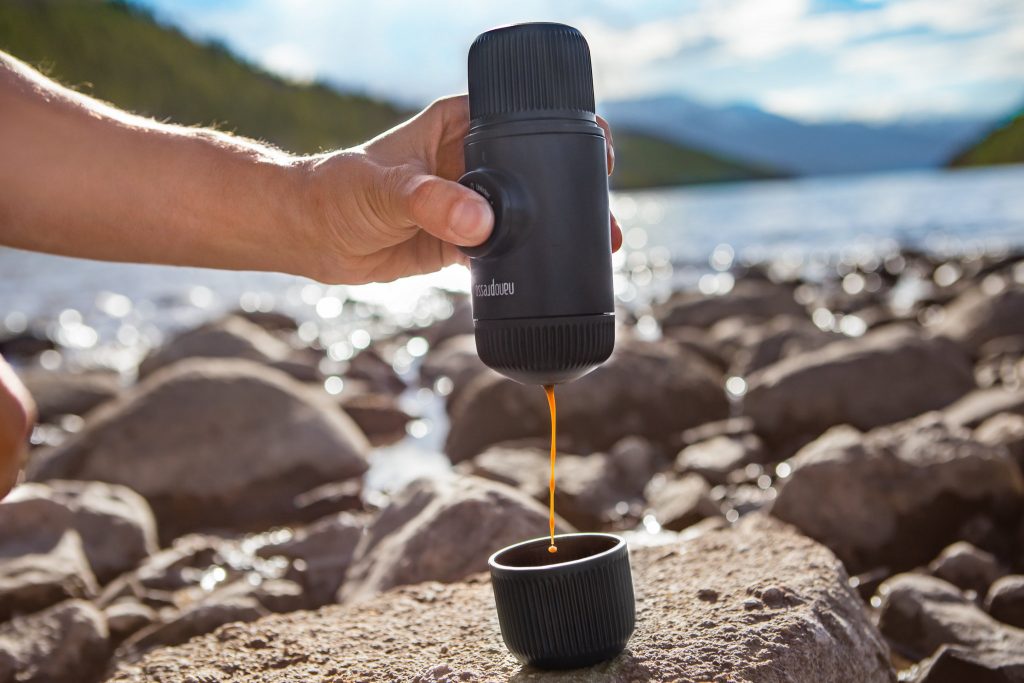
The main advantage of manual espresso machines is that you’re in complete control of the brewing process. You can decide exactly how much ground coffee should go inside the espresso press, and how much water to use with it. If you want to really get into the weeds, you can even control the temperature of water that you’re using with your manual espresso machine.
As soon as you switch to a fully automated or semi-automated espresso machine, you lose most of that control.
Learning how to make espresso manually can be a lot of work because of all this freedom, but that’s an advantage in and of itself. The process of mastering your espresso shot can be extremely rewarding, and it’s a skill that you can pride yourself on every morning.
Many people also like manual espresso machines because of the way they look. Lever machines like the ROK, Flair, and La Pavoni models in particular have a unique aesthetic that harkens back to classic machines of the 20th century. You won’t get that clean, metal look even with the fanciest automated espresso machine.
Yes, manual espresso shots do have some drawbacks – you’ll probably make a lot of poor espresso shots before you master the process, for example. But, if you’re the type of person who appreciates a perfect espresso shot, then it’s hard to beat the classic manual espresso machine.
Manual espresso machines all work to meet the same goal of producing a concentrated, perfect shot of espresso. But, they often go about the process in different ways. Here, we’ll take a look at the features that differentiate manual espresso machines and explain how these features can impact your brewing process.
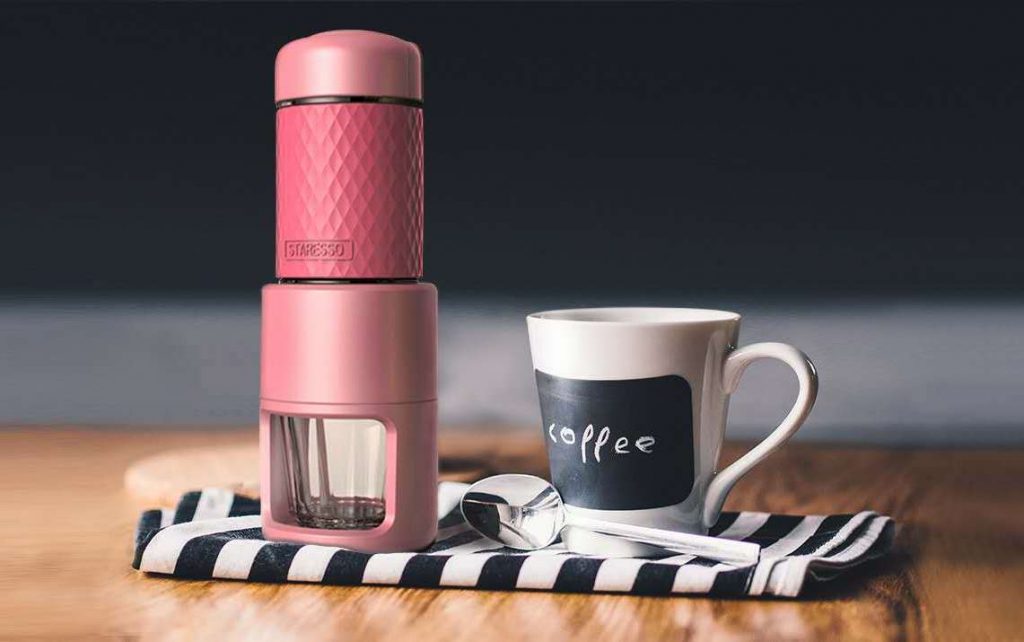
Lever espresso machines like the La Pavoni model have a tank in which water is heated to a boil to achieve pressurization. This pressure is important, since it forces the water up into the head from which you can then use the lever to push the hot water through your coffee grounds. With this style of lever espresso maker, you can make multiple espresso shots in a row by using the already hot water in the tank and simply changing out the coffee grounds.
Alternatively, newer lever machines like the Flair and ROK models require you to heat water separately and then pour it into a piston. With any lever espresso machine, there are a lot of variables – including the speed at which you lower the lever to push water through your coffee grounds. However, you can’t always control the water temperature, since it needs to be brought to a boil for pressurization to occur.
Pumping espresso machines like the WACACO and STARESSO models separate the heating units and pressurization step by allowing you to manually pump the water. So, you can actually control the temperature of your water since it doesn’t necessarily need to be boiling. The downside is that these types of coffee machines typically have a much smaller capacity, so that you can only heat a few ounces of water at a time. But, having a pump also reduces the fatigue on your arms if you need to make multiple shots in a row.
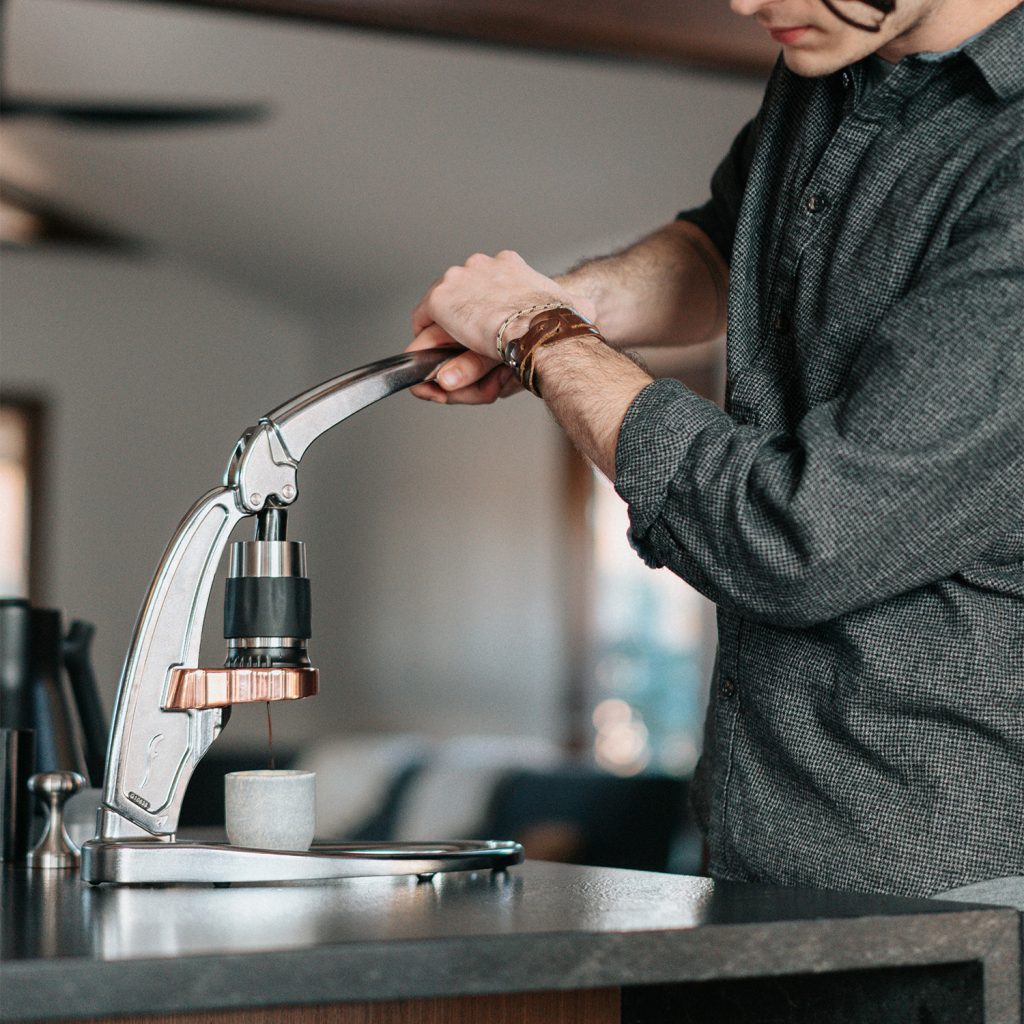
Pressurized lever espresso machines like the La Pavoni model have a tank that’s big enough for 10 shots or more, and you can keep pouring espresso shots until the tank runs out. The downside, though, is that you have to fill the entire reservoir each time and heating it can take 10–15 minutes.
Manual espresso machines aren’t cheap, so it’s important to look for a model that’s made of high-quality materials that will last for a lifetime or longer. Lever espresso machines are typically made from steel, which makes them extraordinarily durable. In fact, these machines can be passed down through generations if you take care of them properly.
Pumping manual espresso machines should also be quite durable, although the pumping can eventually cause a gasket to fail that lets pressure out of the system. They are made from hard plastic resin on the outside, but have steel parts on the inside that can resist heat and won’t leach anything into your hot water.
Almost every manual espresso machine – and all of the models that we reviewed – are capable of using ground coffee to make your espresso. After all, ground coffee is the classic ingredient in espresso, and gives you the most control over factors like grind size and the amount of grounds used. For most people who want to take advantage of the control a manual espresso machine affords, it makes sense to use fresh coffee beans and grind them yourself.
However, pump machines like the WACACO and STARESSO models can also use the popular Nespresso coffee capsules. You may need an attachment to use these, as for the WACACO machine.
These capsules are ideal for when you need to make espresso quickly and don’t have time to deal with grounds, or want to make a large number of espresso shots for guests.
Your espresso machine will probably be a fixture in your kitchen, so it’s important to make sure you have space for it. Lever espresso machines can take up a fair bit of space since you need to have room to operate the lever. On the other hand, pump machines can be very small. The WACACO espresso maker, for example, is just six inches tall and is designed to be portable so you can move it around your kitchen as needed or even take it to work.
Warranties on manual espresso machines vary a lot depending on how exactly your machine works. You’ll find that pump machines tend to have short one- to two-year warranties, in part because the pump is susceptible to breaking after that amount of time. The La Pavoni espresso machine also has a short one-year warranty because it includes an electric heating element. Meanwhile, the fully manual and non-electric ROK and Flair espresso machines come with 10- and 5-year warranties, respectively.
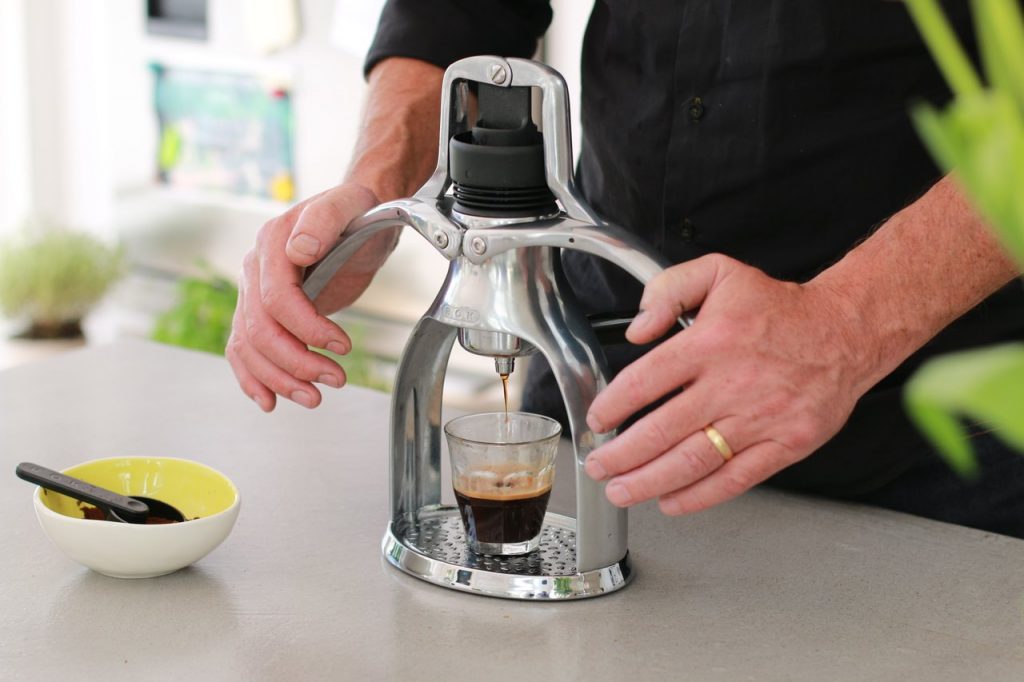
First, you’ll need to heat water. This may be done automatically in your pump machine or in the La Pavoni heated water tank, or you may need to do it on your stove in a separate pot. Keep in mind that the water temperature will ultimately make a difference in how your espresso shot turns out.
You’ll next need to grind up coffee beans. Size matters here, and you can experiment with what ground settings give you the best results for your espresso. When ready, add the grounds into the provided coffee filter and secure it to the espresso machine.
Now, you’ll make espresso by depressing the lever on your machine or by using your hands to pump. Remember that the speed with which water passes through your coffee grinds can make the biggest difference of all in whether your espresso shot turns out perfectly
Our three overall favorite manual espresso machines on the market today are the WACACO Nanopresso Portable Espresso Maker, the Flair Espresso Maker, and the La Pavoni PC-16 Professional Espresso Machine. The La Pavoni model is perfect for coffee shops thanks to its 15-shot capacity, ability to pour double shots, and included milk frother. While this machine is expensive, it can last for decades of use if maintained properly. The Flair maker is a terrific lever machine that looks good and works extremely well. Although it takes some work to make an espresso shot with this machine, it really captures the art of manual espresso making. We feel that the WACACO Nanopresso is the overall best manual espresso machine because of how simple and portable it is. This machine is just six inches long, and can be adapted to use either ground coffee or Nespresso pods. Plus, the pumping mechanism is a lot easier to use than most lever mechanisms.
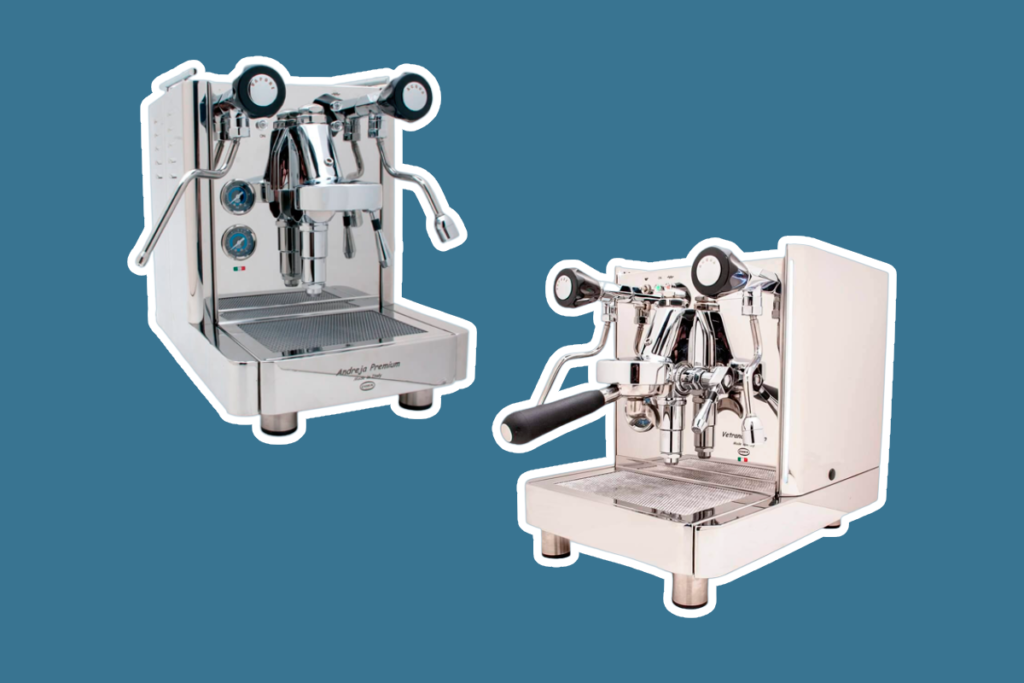
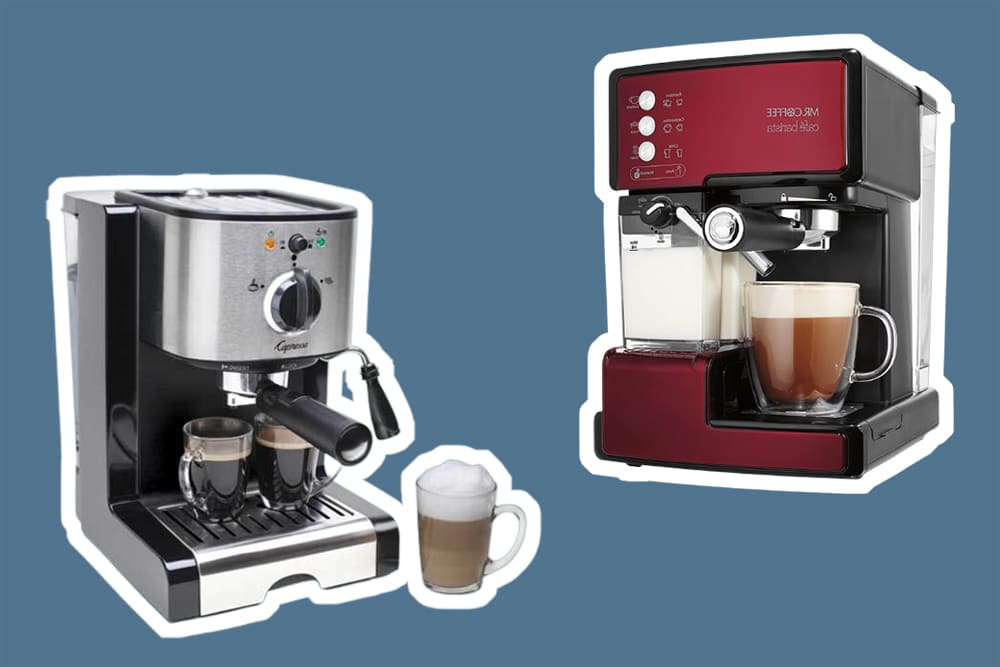

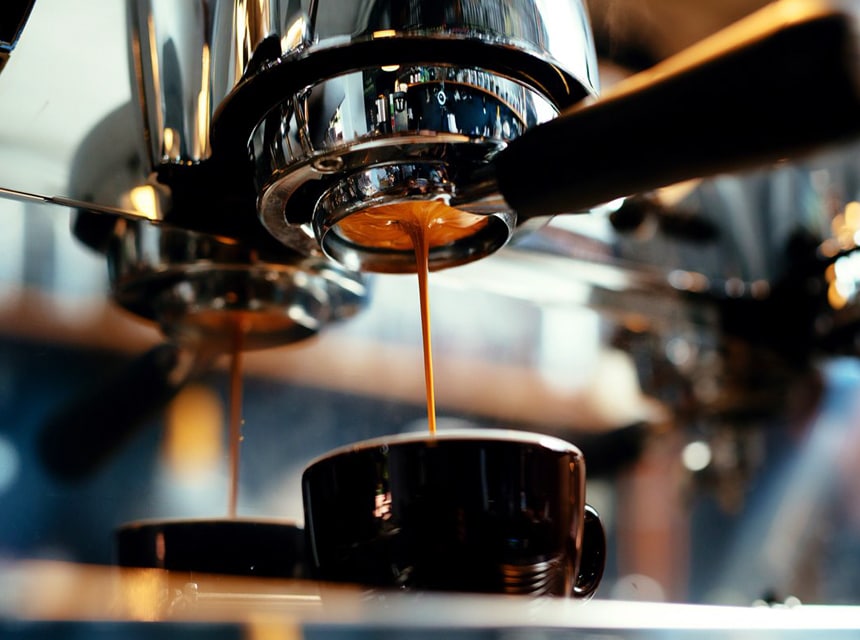
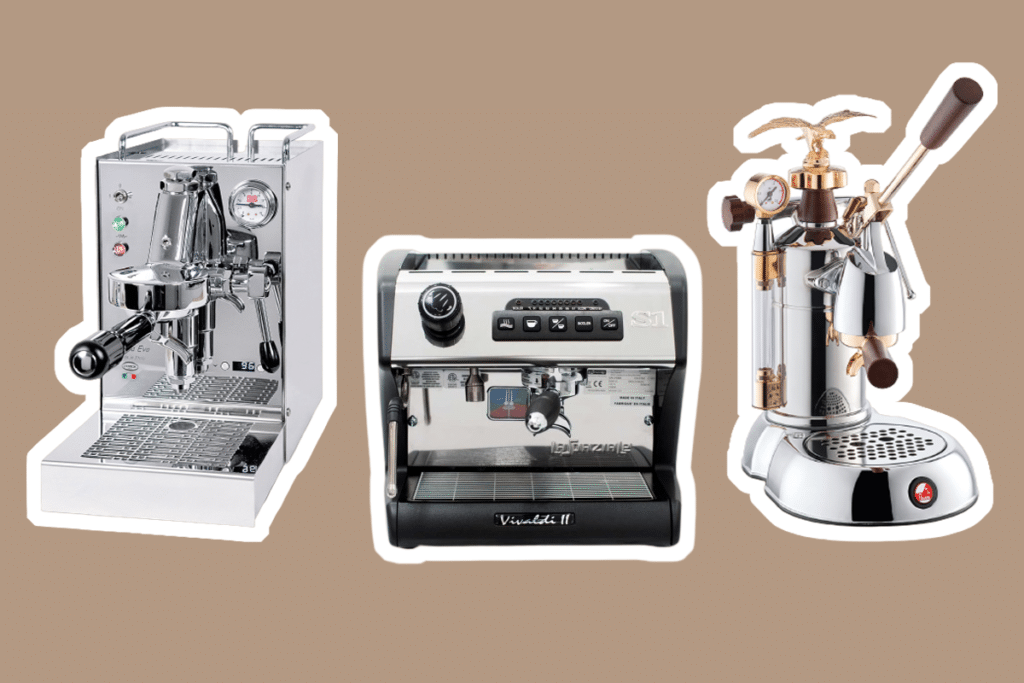
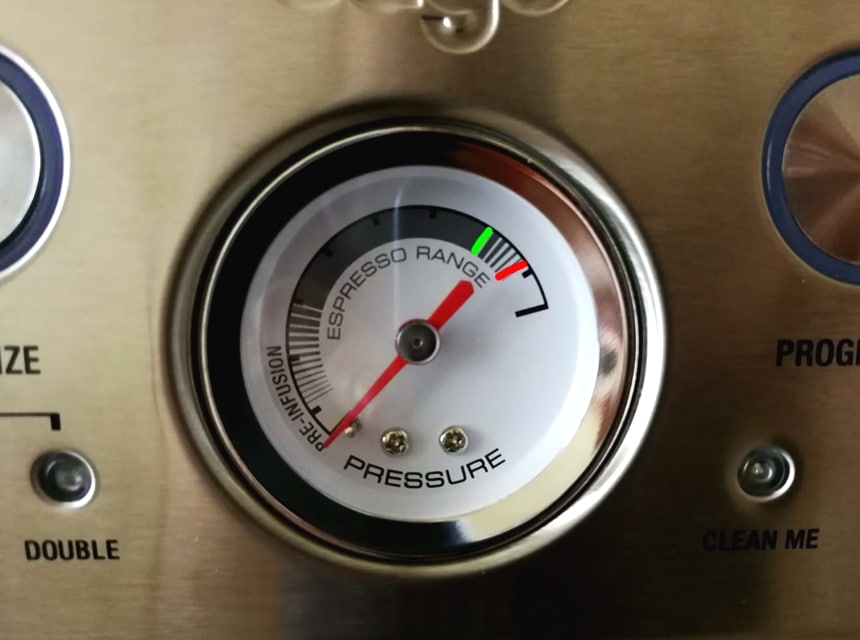
Is the manual espresso machine for home use a good gift? I’m looking for something special for my parents.
I think that a home manual espresso machine is a good gift choice for the people in your family who love coffee in a way that they like to make their own espresso at home. Even though they are not as easy to use as the automatic ones, they can help your loved ones to get a great espresso at home for a very affordable price. Are you choosing from something luxury or budget-friendly?
Which is better, a manual espresso machine or an automatic one?
I will never give up my manual espresso machine for this reason: It’s the best way to learn the craft. If you are looking to better your coffee making skills, there is no better way to do it than to be fully in control of your machine. I’m sure you have seen video demonstrations of people making coffee on automatic machines, but it doesn’t compare to the experience of doing it yourself.
Guys, are there any manual espresso machines under 200 dollars on the market? I want to buy a machine for home use that works well.
In general, espresso machines under this price range are probably going to be pretty low-end devices that don’t make particularly good shots. If you’re looking for quality coffee, you should be prepared to spend more than $200.
I’ve been using the Flair espresso maker for about 6 months now, so far no issue at all. It’s durable and works as advertised and I like its design, as my old machine was garbage. Overall, everythind is working well and it doesn’t take a lot of space on my kitchen counter.
I am looking for a good mid-range commercial manual espresso machine, which has an excellent warranty and is reliable. I want this to be my last purchase as I plan on roasting my own beans as well as having my own espresso bar. If anyone has any suggestions, I would appreciate it!
What is so special about manual lever espresso machines?? Is it worth the hype?
The way the lever works is unique for espresso machines. I would say that compared to normal steam-driven or electrically driven piston/plunger types, manually operated levers are much more specialized to make good coffee. But note that these types of espresso machines are more difficult to use than other models because they require the user to regulate temperature. Ah, and sometimes it’s challenging to get good shot extraction with a manual lever system (it took me a couple of weeks to understand how to operate it lol)